Related Research Articles

The Great Train Robbery is a 1903 American silent film made by Edwin S. Porter for the Edison Manufacturing Company. It follows a gang of outlaws who hold up and rob a steam locomotive at a station in the American West, flee across mountainous terrain, and are finally defeated by a posse of locals. The short film draws on many sources, including a robust existing tradition of Western films, recent European innovations in film technique, the play of the same name by Scott Marble, the popularity of train-themed films, and possibly real-life incidents involving outlaws such as Butch Cassidy.

The electric chair is a specialized device employed for carrying out capital punishment through the process of electrocution. During its use, the individual sentenced to death is securely strapped to a specially designed wooden chair and electrocuted via strategically positioned electrodes affixed to the head and leg. This method of execution was conceptualized by Alfred P. Southwick, a dentist based in Buffalo, New York, in 1881. Over the following decade, this execution technique was developed further, aiming to provide a more humane alternative to the conventional forms of execution, particularly hanging. The electric chair was first utilized in 1890 and subsequently became known as a symbol of this method of execution.
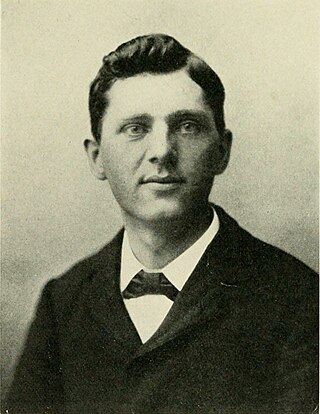
Leon F. Czolgosz was an American laborer and anarchist who assassinated president William McKinley on September 6, 1901, in Buffalo, New York. The president died on September 14 after his wound became infected. Caught in the act, Czolgosz was tried, convicted, and executed by the State of New York seven weeks later on October 29, 1901.

William Francis Kemmler was an American peddler, alcoholic, and murderer, who, in 1890, became the first person in the world to be executed by electric chair. He was convicted of murdering Matilda "Tillie" Ziegler, his common-law wife, a year earlier. Although electrocution had previously been successfully used to kill a horse, Kemmler's execution did not go smoothly.
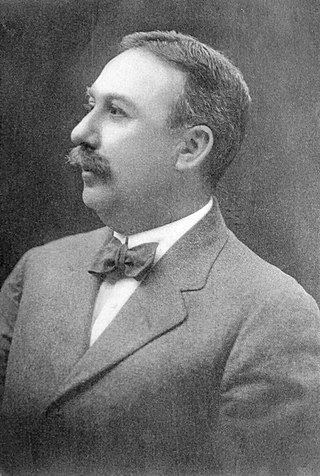
Edwin Stanton Porter was an American film pioneer, most famous as a producer, director, studio manager and cinematographer with the Edison Manufacturing Company and the Famous Players Film Company. Of over 250 films created by Porter, his most important include What Happened on Twenty-third Street, New York City (1901), Jack and the Beanstalk (1902), Life of an American Fireman (1903), The Great Train Robbery (1903), The European Rest Cure (1904), The Kleptomaniac (1905), Life of a Cowboy (1906), Rescued from an Eagle's Nest (1908), and The Prisoner of Zenda (1913).
Auburn Correctional Facility is a state prison on State Street in Auburn, New York, United States. It was built on land that was once a Cayuga village. It is classified as a maximum security facility.

Electrocuting an Elephant is a 1903 American, short, black-and-white, silent documentary film of the killing of the elephant Topsy by electrocution at a Coney Island amusement park. It was produced by the Edison film company and is believed to have been shot by Edwin S. Porter or Jacob Blair Smith.
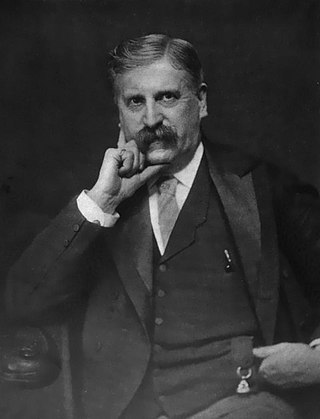
Charles Rufus Skinner was a U.S. Representative from New York.

Another Job for the Undertaker is a 1901 silent comic trick film made at Edison's recently opened studio at 41 East 21st Street in Manhattan. It was photographed by Edwin S. Porter and co-directed by Porter and George S. Fleming. The two-shot film was copyrighted on May 15, 1901 and is approximately two minutes in length. It lacks a head title, which would have been supplied by projecting a separate lantern slide before screening the film.

McKinley at Home, Canton, Ohio aka William McKinley at Canton, Ohio is a silent film reenactment of William McKinley receiving the Republican nomination for President of the United States in September 1896. The actual nomination had been several weeks earlier. McKinley is shown emerging from his house to receive the news from his secretary George Cortelyou. His wife Ida can be seen in a rocking chair on the porch. McKinley is seen removing his hat and wiping his forehead with a handkerchief after receiving the news. It was filmed by a two-man crew for American Mutoscope and Biograph Company on 68 mm film, 60.02 m in length. McKinley's brother Abner and former US president Benjamin Harrison were stockholders in the film company.

William McKinley, the 25th president of the United States, was shot on the grounds of the Pan-American Exposition in the Temple of Music in Buffalo, New York, on September 6, 1901, six months into his second term. He was shaking hands with the public when anarchist Leon Czolgosz shot him twice in the abdomen. McKinley died on September 14 of gangrene caused by the wounds. He was the third American president to be assassinated, following Abraham Lincoln in 1865 and James A. Garfield in 1881.
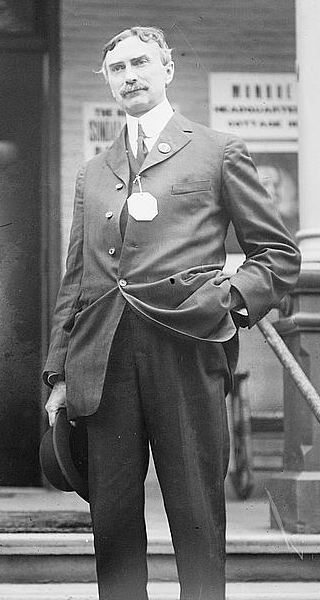
John P. Jaeckel was an American politician.
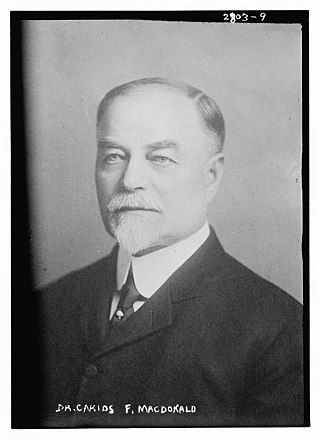
Carlos Frederick MacDonald, M.D. was a psychiatrist, and the chairman of the New York State Commission in Lunacy from 1880 to 1896. He was involved in the design of the first electric chair and examined Leon F. Czolgosz, pronouncing him sane enough to be executed in the electric chair after the assassination of President William McKinley in 1901. He was President of the American Psychiatric Association from 1913 to 1914. He was an expert witness at the trials of Harry Thaw and Harrison W. Noel.
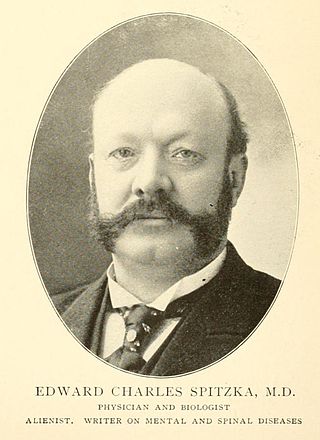
Edward Charles Spitzka was an eminent late-19th century alienist, neurologist, and anatomist. Dr. Spitzka was the author of the landmark psychiatric manual "Treatise on Insanity, Its Classification, Diagnosis and Treatment" published in 1883. He pioneered studies of the anatomy of the human nervous system.

The Martyred Presidents is a 1901 American film directed by Edwin S. Porter.

John E. Gerin M.D. was the physician at Auburn State Prison in Auburn, New York under warden George W. Benham. Gerin performed the autopsy on Leon Czolgosz.
George S. Fleming was an American actor, director, and scenic designer whose short films were influential early projects in the medium.

Kansas Saloon Smashers is a 1901 comedy short film produced and distributed by Edison Studios. Directed by Edwin S. Porter, it is a satire of American activist Carrie Nation. The film portrays Nation and her followers entering and destroying a saloon. After the bartender retaliates by spraying Nation with water, policemen order them out; the identities of the actors are not known. Inspiration for the film was provided by an editorial cartoon which appeared in the New York Evening Journal.

The following events occurred in September 1901:

James Benjamin Parker was an African-American man most noted for attempting to stop Leon Czolgosz from assassinating President William McKinley.
References
- ↑ Auerbach, Jonathan (2007). Body Shots: Early Cinema's Incarnations. University of California Press, ISBN 9780520252936
- ↑ Musser, Charles (1991). Before the Nickelodeon: Edwin S. Porter and the Edison Manufacturing Company. University of California Press. pp. 187–190. Retrieved 1 February 2024.
- 1 2 Fairservice, Don (2002). Film Editing: History, Theory and Practice: Looking at the Invisible. Manchester University Press, ISBN 9780719057779
- ↑ Doane, Mary Ann (2002). The Emergence of Cinematic Time: Modernity, Contingency, the Archive. Harvard University Press, ISBN 9780674007291